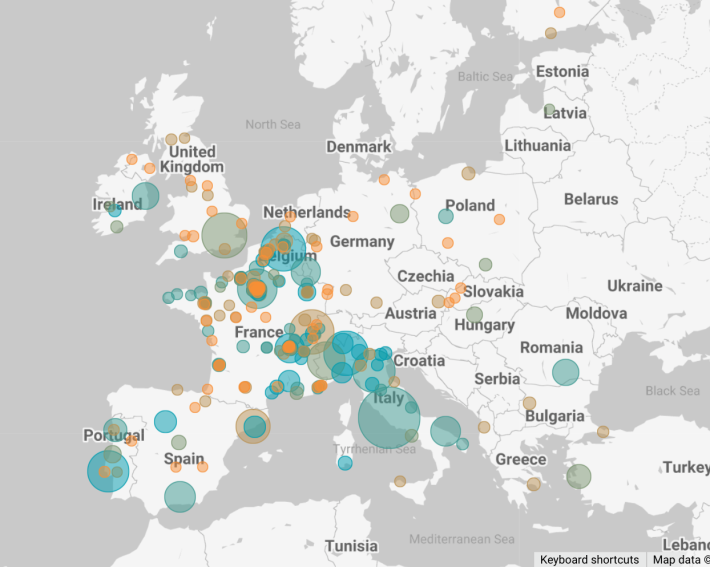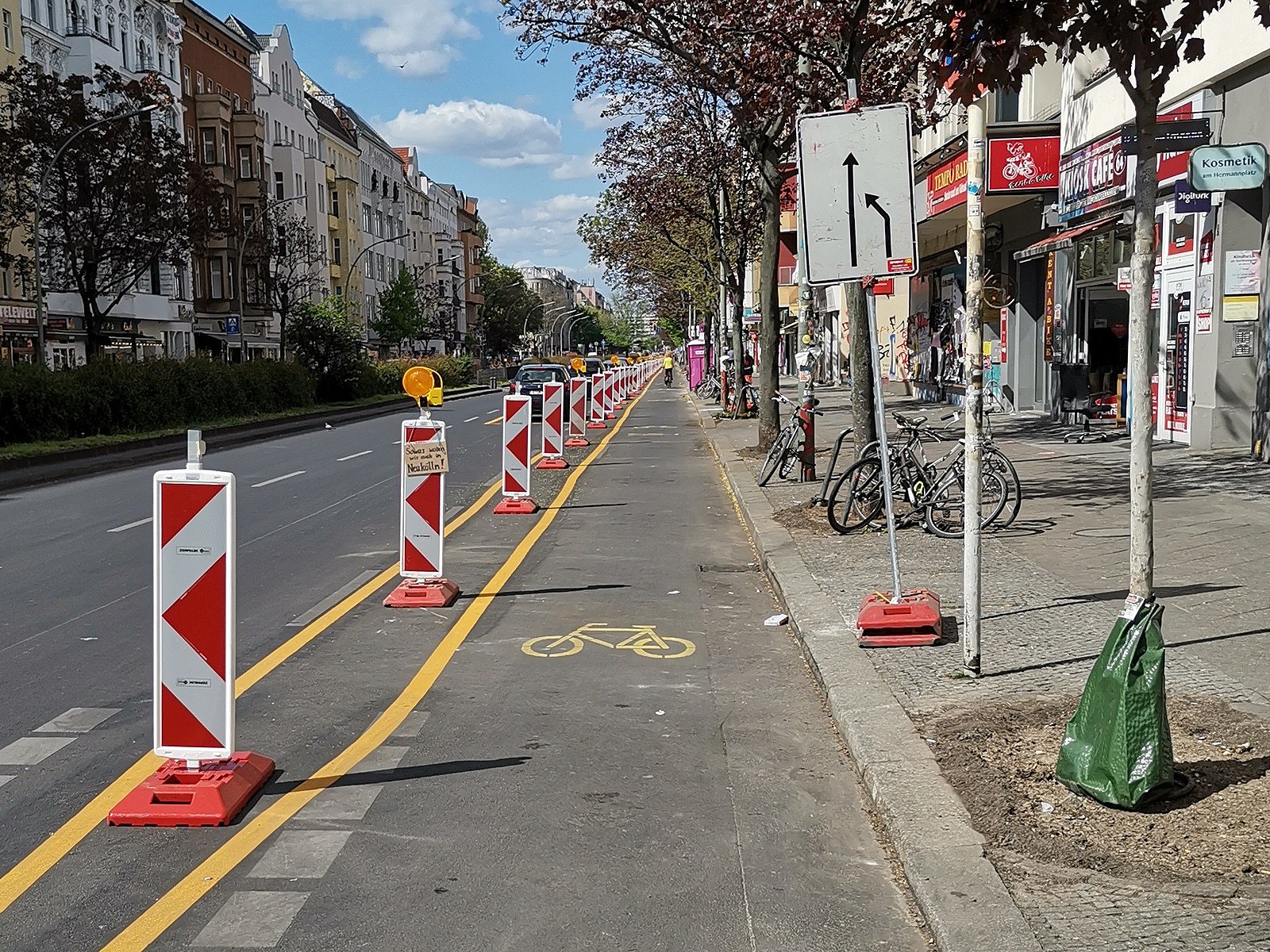If you pop it up, they will come.
European cities that installed pop-up bike lanes during the early days of the pandemic increased the number of daily cycling trips by as much as 48 percent, previewing what could be possible if similarly-built American cities did the same.
In a recent study, a pair of Berlin-based researchers cross-referenced data from over 700 bicycle counters across 106 European cities with detailed maps about where EU communities installed quick-build bicycle infrastructure to give residents more outdoor, solo mobility options when cities fell under quarantine orders. The study compared post-pop-up counts with pre-pandemic daily cycling trip averages, and the researchers took pains to control for as many variables as possible that might have impacted ridership other than the intervention itself, including "the density of public transport stops, population density, and topography, but also for additional, unobservable dimensions, such as social capital and local preferences for green lifestyles, at a high spatial resolution within the city."
The result: cities that gave their residents more protected space to bike during the early days of COVID experienced increases in ridership between 11 to 48 percent on average, depending on how strongly those extenuating variables were weighted. And if the new interventions became permanent, the team estimates that Europe would enjoy "between $1 and $7 billion in [public] health benefits" — an amount that the authors say significantly exceeds the money those communities spent on the pop-ups themselves.

Sadly, the Berlin researchers weren't able to replicate their results United States, for several depressing reasons.
For one, while dozens of American cities did build pop-up bike infrastructure, most didn't build it at anywhere near the scale of their European counterparts, who averaged 7.1 miles of tactical urbanist projects per town, with some large, ambitious cities like Rome, London, and the Vaud region of Switzerland installing more than 62 miles of quick-build interventions each. Moreover, the U.S. cities that did do something didn't always systematically track how their pandemic-era experiments impacted trip volumes, or hadn't invested in a network of city-wide bicycle counters before the pandemic that would have made that data comparison meaningful.
The researchers warn, though, that even if more U.S. cities had done pop-ups, they may not have seen Europe-level results.
"Many of the cities in our sample are fundamentally well suited for cycling," authors Sebastian Kraus and Nicolas Koch wrote. "For instance, they are often dense and have a high share of side roads with slow car speeds. Therefore, they can be assumed to have a high potential for catch-up growth, which is one explanation for our larger effect estimate."
Put another way: if a fundamentally autocentric city is awful for cyclists right now, a pop-up lane — particularly if it's not connected to a broader network of protected paths, or targeted at the low-income and BIPOC neighborhoods that most relied on things like bikeshare during the pandemic— might not have such a dramatic impact.

No American city is inherently hostile to cyclists, though — and especially when it comes to legacy cities built before the advent of the automobile, human-centered designs can be built back into the landscapes they were once torn out of to accommodate the rise of the private vehicle.
Those changes don't even have to take a long time. One particularly good model for the U.S. might be Brussels, which paired 30 miles of bike lane pop-ups with a nearly equivalent length of traffic calming interventions to tame its relatively car-clogged streets. (Lest we believe that every European city is a car-free paradise, it's important to note that the Belgian capital actually has an 11 percent higher mode share for private automobiles than New York City; several of the other communities in the Berlin sample, like Bologna, Lisbon, and Turin, do too.)
Moreover, American leaders have a particularly critical opportunity to do even better than some of their European counterparts: by centering equity every single time they build a pop-up lane. As the Berlin researchers note, adding quick-build infrastructure to underserved neighborhoods may help get low-income people and BIPOC on bikes, but "important barriers to adoption remain for underrepresented groups," including racist police harassment and brutality, lack of access to a bike and the maintenance it requires, access to the specific routes and destinations that they need most, and so much more. Even when those barriers are addressed, it's still critical that the speedy nature of quick-build projects not be used as an excuse to bypass the meaningful opportunities to co-author their built environment that residents of underserved neighborhoods deserve, as anti-racist transportation leaders around the world have emphasized throughout the pandemic.
America doesn't have to wait for the next lockdown to build pop-up bike lanes, and to build them better. And if the Berlin study is any indication, doing it right could get a lot of people out of their cars.






